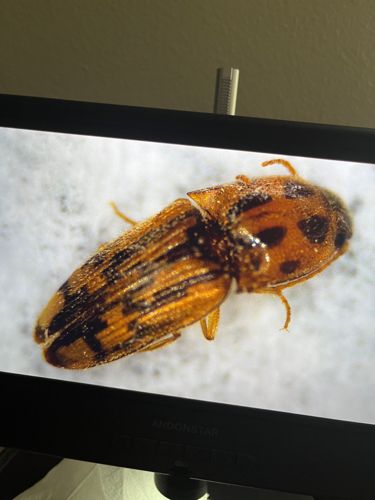Click Beetle (likely eyed click beetle or a similar species)
Scientific Name: Family Elateridae (specific species difficult to determine from image alone, but resembles Alaus oculatus or similar)
Order & Family: Order: Coleoptera, Family: Elateridae
Size: Typically 12-45 mm (0.5 to 1.8 inches) but can vary by species.

Natural Habitat
Widely distributed globally, found in diverse habitats including forests, grasslands, agricultural fields, and gardens. Larvae (wireworms) live in soil, rotting wood, or under bark.
Diet & Feeding
Adult click beetles primarily feed on nectar, pollen, plant sap, or sometimes are predaceous on small insects. Larvae (wireworms) are often omnivorous, feeding on roots, seeds, tubers, decaying wood, or other soil-dwelling insects.
Behavior Patterns
Known for their unique "clicking" mechanism: when flipped onto their backs, they can arch their body and snap a spine into a groove on their underside, producing an audible 'click' and launching themselves into the air to right themselves. Many species are nocturnal or crepuscular. Larvae can take several years to develop.
Risks & Benefits
Potential risks include crop damage by wireworm larvae to agricultural plants (e.g., corn, potatoes, wheat). Benefits include adult click beetles being pollinators for some plants, and some larval species are beneficial predators of other insect pests. They are also part of the food chain for other animals.
Identified on: 9/5/2025